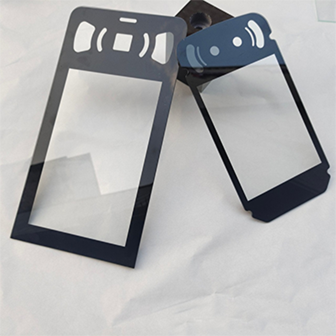Nov . 13, 2024 11:23 Back to list
use of frosted glass
The Use of Frosted Glass A Versatile Design Element
Frosted glass has gained popularity in architectural and interior design over the years, admired for its unique aesthetic and functional characteristics. This semi-transparent material is created by sandblasting, acid etching, or applying a frosted film to clear glass, resulting in a surface that diffuses light while providing a level of privacy. In this article, we will explore the various uses of frosted glass, its advantages, and its applications in both residential and commercial settings.
Aesthetic Appeal
One of the primary reasons frosted glass is sought after is its ability to enhance the visual appeal of a space. The soft, translucent quality of frosted glass diffuses harsh light, creating a gentle atmosphere that can elevate the overall design of a room. It harmonizes beautifully with various styles, from modern and minimalist to traditional and rustic, making it a versatile choice for designers.
In addition to its aesthetic qualities, frosted glass can be customized with patterns, textures, or etchings, allowing for creative expression in design. Custom designs can reflect a brand's identity in commercial spaces or contribute to a thematic decor in residential settings. This personalization makes frosted glass an ideal choice for those looking to add a unique touch to their environments.
Privacy Solutions
Frosted glass is often utilized in areas where privacy is paramount. It allows natural light to filter through while obscuring visibility, making it perfect for bathrooms, bedrooms, and even offices. In residential applications, frosted glass is commonly used for bathroom windows or shower enclosures, ensuring a private yet well-lit space. In commercial settings, frosted glass partitions have become a popular choice for office layouts, offering employees the privacy they need while maintaining an open and airy feel.
Light Diffusion and Energy Efficiency
The ability of frosted glass to diffuse light effectively is another advantage. Unlike clear glass, which can create harsh shadows and bright spots, frosted glass helps to evenly distribute natural light throughout a room. This quality can enhance the ambiance, making spaces feel more inviting and pleasant. Furthermore, by allowing natural light to filter in while reducing glare, frosted glass can contribute to increased energy efficiency. It can decrease the reliance on artificial lighting during the day, leading to potential savings on energy bills.
use of frosted glass

Safety and Durability
In terms of safety, frosted glass can be a pragmatic choice. Its surface is less likely to show fingerprints or smudges compared to clear glass, maintaining a cleaner appearance over time. Additionally, frosted glass can be produced using different types of safety glass, such as tempered or laminated glass, adding a layer of durability and safety. In environments where breakage is a concern, such as schools or hospitals, frosted glass offers a secure and resilient option.
Applications Across Various Spaces
Frosted glass finds applications in a multitude of settings. In residential architecture, it is commonly used in entry doors, interior doors, windows, and privacy screens. Its ability to provide both light and seclusion makes it a popular choice for modern homes that emphasize open space and natural light.
In commercial spaces, frosted glass can be found in conference rooms, office dividers, and storefronts. The modern appeal of frosted glass helps to create a professional atmosphere while still offering the privacy needed for sensitive discussions. Additionally, businesses can utilize frosted glass to reinforce branding through custom designs or logos, turning a standard glass panel into a unique brand statement.
Moreover, in hospitality design, frosted glass is increasingly used in hotels and restaurants, from decorative partitions to bathroom installations. Its attractiveness and functional properties enhance the guest experience, promoting an upscale ambiance that customers appreciate.
Conclusion
Frosted glass is a remarkable material that combines beauty and functionality, making it a go-to choice for architects and designers. Its aesthetic appeal, privacy solutions, light-diffusing qualities, and safety features render it a versatile element in both residential and commercial spaces. As trends continue to evolve, the use of frosted glass is likely to expand, offering innovative solutions for those looking to enhance their environments. Whether used as a simple decorative element or a functional privacy screen, frosted glass will undoubtedly continue to play a significant role in modern design.
-
Safety and Style with Premium Laminated Glass Solutions
NewsJun.24,2025
-
Reinvents Security with Premium Wired Glass
NewsJun.24,2025
-
Premium Float Glass Line for Modern Architecture
NewsJun.24,2025
-
Low Emissivity Glass for Energy-Efficient Architecture
NewsJun.24,2025
-
High-Performance Insulated Glass Solutions for Modern Architecture
NewsJun.24,2025
-
Elevates Interior Style with Premium Silver Mirror
NewsJun.24,2025
Related PRODUCTS














